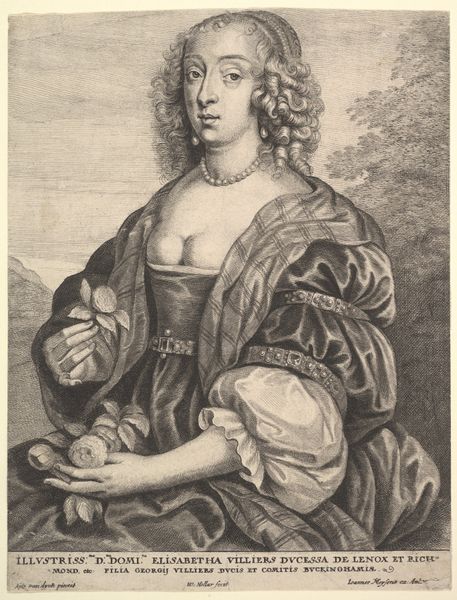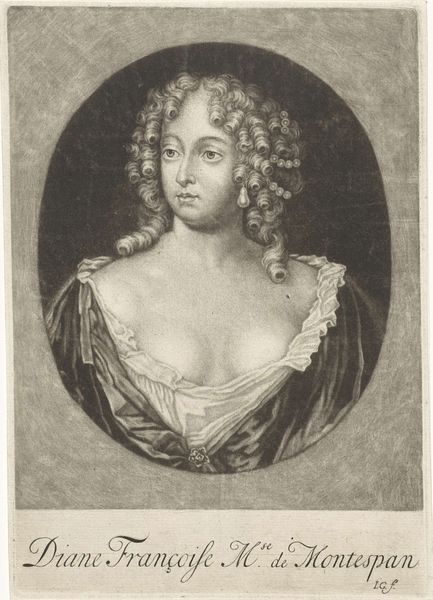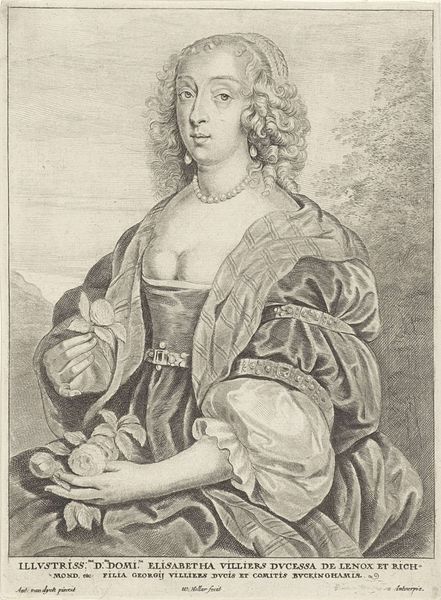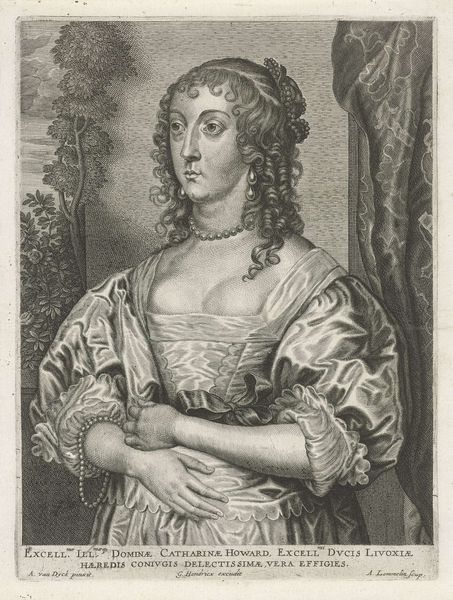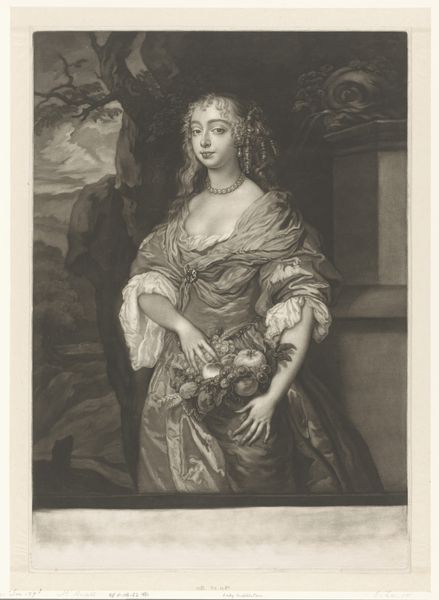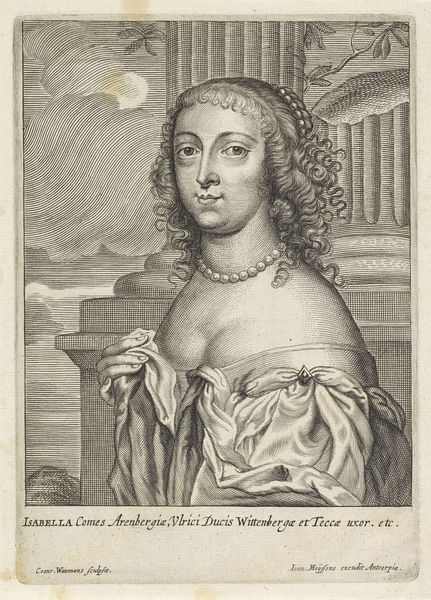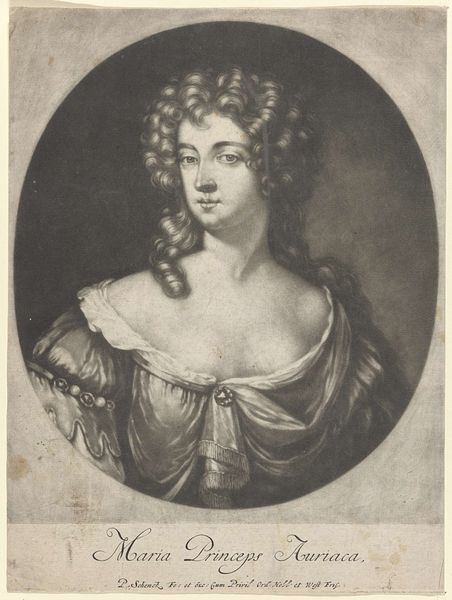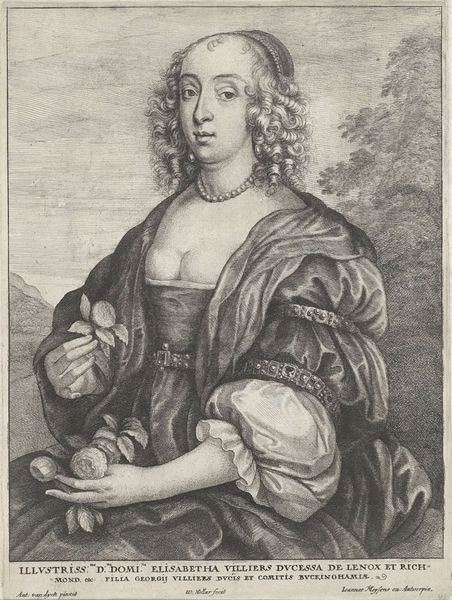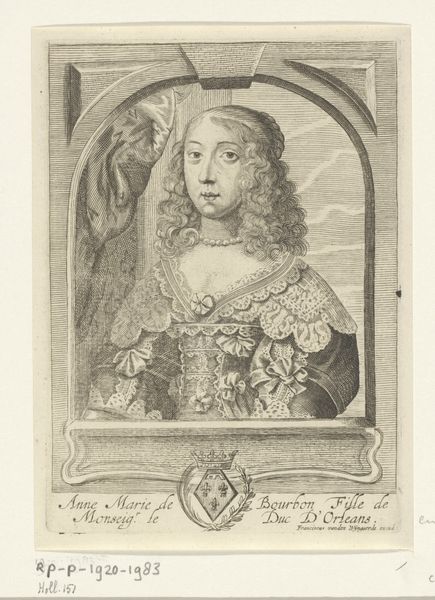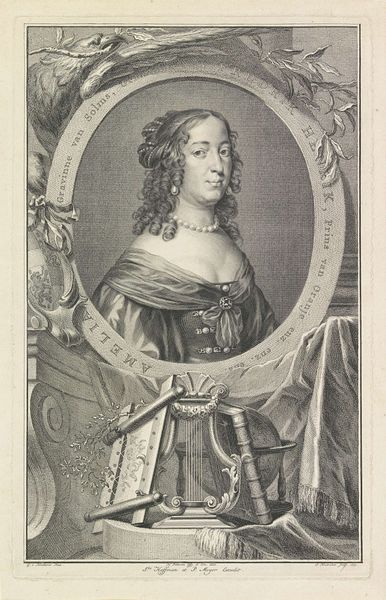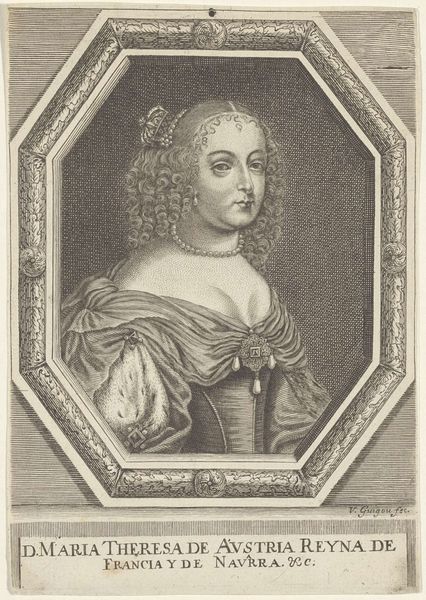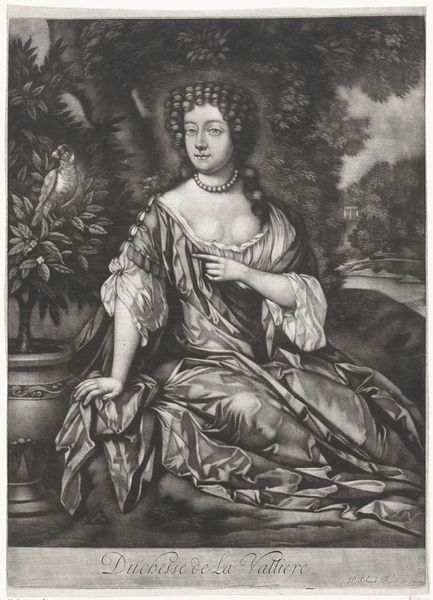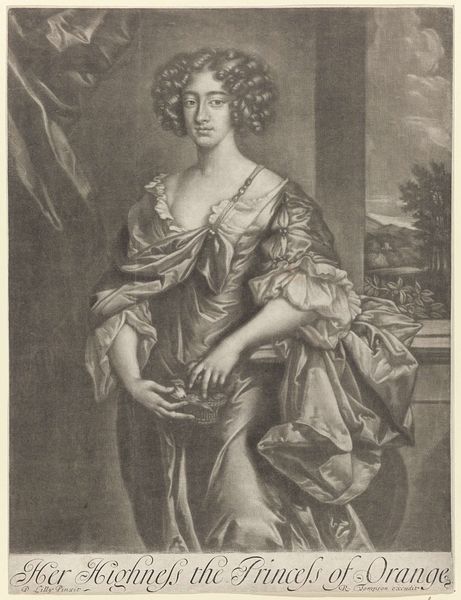
Portret van Louise Françoise de La Baume Le Blanc de la Vallière 1667 - 1707
0:00
0:00
print, engraving
#
portrait
#
baroque
# print
#
history-painting
#
engraving
Dimensions: height 338 mm, width 237 mm
Copyright: Rijks Museum: Open Domain
Editor: Here we have Hendrik Bary's engraving, "Portret van Louise Françoise de La Baume Le Blanc de la Vallière," created sometime between 1667 and 1707. It depicts the Duchess de la Vallière, one of Louis XIV's mistresses. I find the textures striking; the billowing fabric contrasts so vividly with the Duchess’s composed expression. What catches your eye? Curator: The work is a fascinating exercise in texture and tonal contrast. Bary has manipulated the engraved line to achieve a remarkable variety of effects. Consider the drapery: the dense, swirling lines create a sense of dynamism and volume, a clear visual language denoting depth. The face is rendered with finer, more delicate lines, achieving a smoothness that distinguishes skin from textile. It’s a dialogue of sorts. Do you notice how light interacts with different parts of the image, illuminating certain areas while leaving others in shadow? Editor: Yes, I see that now! The light seems to fall predominantly on her face and hands, guiding the viewer's gaze, and it defines the curves in her voluminous hair, whereas the background drapes are much darker. Curator: Precisely. This interplay is carefully orchestrated to create emphasis and direct the viewer’s attention. Bary uses light and shadow, tone and texture, as the key components to articulate not just the figure's form, but also a particular mood and the status. Are we meant to focus on her inner strength and power or her beauty and adornment? Editor: I hadn't considered that the lighting contributed to more than just realism, that it creates almost an unspoken visual dialectic. So the meaning isn't necessarily explicit in the image but suggested by the artist through purely formal techniques? Curator: Exactly. Bary has taken an image steeped in political and historical meaning and recoded its function via pictorial methods. It is in this precise manipulation of form, tone, and line that the artist speaks most clearly, it moves the work away from merely acting as record. Editor: That’s an entirely new perspective for me. Thanks, I'll never see portraits quite the same way! Curator: It's these subtleties of construction that grant art its continuing power.
Comments
No comments
Be the first to comment and join the conversation on the ultimate creative platform.
